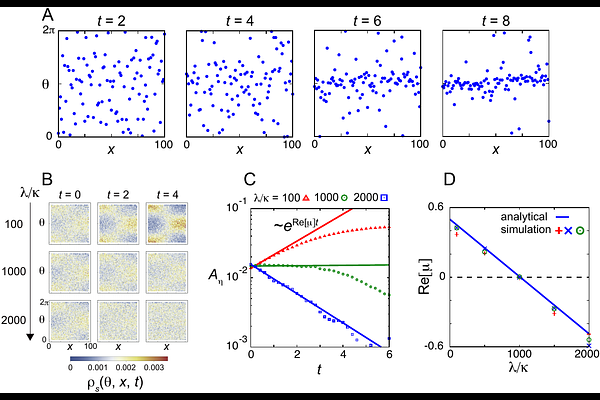Statistical description of mobile oscillators in embryonic pattern formation

Statistical description of mobile oscillators in embryonic pattern formation
Uriu, K.; Morelli, L. G.
AbstractSynchronization of mobile oscillators occurs in numerous contexts, including physical, chemical, biological and engineered systems. In vertebrate embryonic development, a segmental body structure is generated by a population of mobile oscillators. Cells in this population produce autonomous gene expression rhythms, and interact with their neighbors through local signaling. These cells form an extended tissue where frequency and cell mobility gradients coexist. Gene expression kinematic waves travel through this tissue and pattern the segment boundaries. It has been shown that oscillator mobility promotes global synchronization. However, in vertebrate segment formation, mobility may also introduce local fluctuations in kinematic waves and impair segment boundaries. Here we derive a general framework for mobile oscillators that relates local mobility fluctuations to synchronization dynamics and pattern robustness. We formulate a statistical description of mobile phase oscillators in terms of a probability density. We obtain and solve diffusion equations for the average phase and variance, revealing the relationship between local fluctuations and global synchronization in a homogeneous population of oscillators. Analysis of the probability density for large mobility identifies a mean-field transition, where locally coupled oscillators start behaving as if each oscillator was coupled with all the others. We extend the statistical description to inhomogeneous systems to address the gradients present in the vertebrate segmenting tissue. The theory relates pattern stability to mobility, coupling and pattern wavelength. The general approach of the statistical description may be applied to mobile oscillators in other contexts, as well as to other patterning systems where mobility is present.